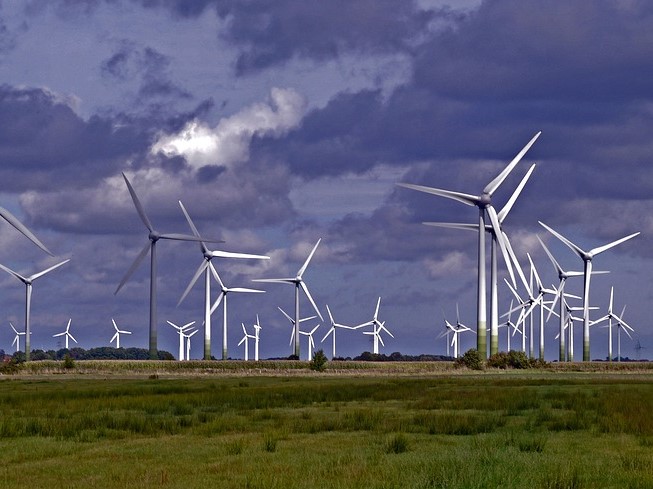Tailwinds Power the US Wind Industry
At the end of 2019, more than 22 gigawatts of wind projects were under construction and another 22 gigawatts were in advanced development stages.
The U.S. wind industry continues to expand at a steady pace, according to the latest report issued by the American Wind Energy Association, in which the organization presents the industry’s activity during 2019’s fourth quarter. Overall, 2019 ranks as the third-best year on record with more than 9GW of wind power added to the U.S. grid, while the construction and advanced development pipeline was up 24 percent year-over-year.
Throughout the U.S., at the end of 2019, there were more than 59,800 wind turbines operating across 41 states and two U.S. territories with a combined 105,583 megawatts of wind power capacity. Texas is by far the state with the largest wind power capacity—nearly 29 gigawatts—followed by Iowa with a little over 10 gigawatts, Oklahoma (more than 8GW), Kansas (more than 6GW) and California (nearly 6GW).
2019 and onward
In 2019, project developers added 9,143 megawatts of wind power capacity to the grid, of which more than half (5,476 megawatts) were added in the final quarter, marking the fourth strongest quarter on record. Specifically, in the final three months of the year, project owners commissioned 35 new projects in 16 states led by Texas (1.8GW installed), Iowa (1.2GW), South Dakota (506MW), North Dakota (473MW) and Illinois (465MW). This comes at the heels of the third quarter when nearly 2GW of wind capacity was installed.
READ ALSO: Offshore Wind to Develop Into a $1 Trillion Business
At the end of the year, more than 22 gigawatts of wind projects were under construction and another 22 gigawatts in advanced development, including nearly 7.5 gigawatts of offshore wind, or 17 percent of the development pipeline. Across the country, there are 18 states with more than 1 gigawatt under construction or advanced development, with Texas holding the top spot, which represents 18 percent of the development pipeline, followed by Wyoming (11 percent) Oklahoma (8 percent), Virginia (6 percent) and New York (5 percent).
Wind clients & technology
The wind fleet expansion was mirrored by the power purchase agreement activity, which reached a new high, last year, reaching 8,726 megawatts, 2,077MW of which were announced in the fourth quarter. Specifically, corporate customers signed 59 percent or 1,236 megawatts of capacity. McDonald’s is one of the six companies that purchased wind energy for the first time, signing two virtual power purchase agreements for 380MW of wind and solar power from two projects located in Texas. Meanwhile, utilities signed contracts for 841 megawatts of wind power from October to December 2019, and 5,266 megawatts of wind energy throughout the year, the highest amount on record.
The turbine technology continues to improve, a quarter of turbines installed in 2019 being rated between 3.1MW to 3.6MW. In addition, almost two-thirds of the land-based projects in the pipeline use turbines with a nameplate capacity between 2MW and 2.9MW, while 35 percent have selected turbines rated above the 3MW mark.
Among turbine manufacturers, GE Renewable Energy holds the top spot with 45 percent of new capacity installations in 2019. Spanish company Vestas followed with a market share of 33 percent, Siemens Gamesa Renewable Energy holding 16 percent and Nordex USA accounting for 6 percent of installations.







You must be logged in to post a comment.